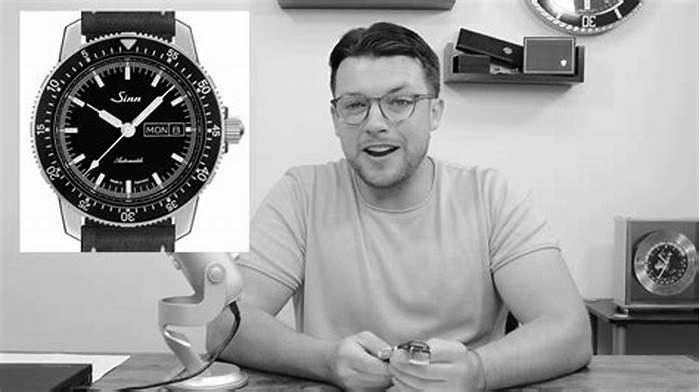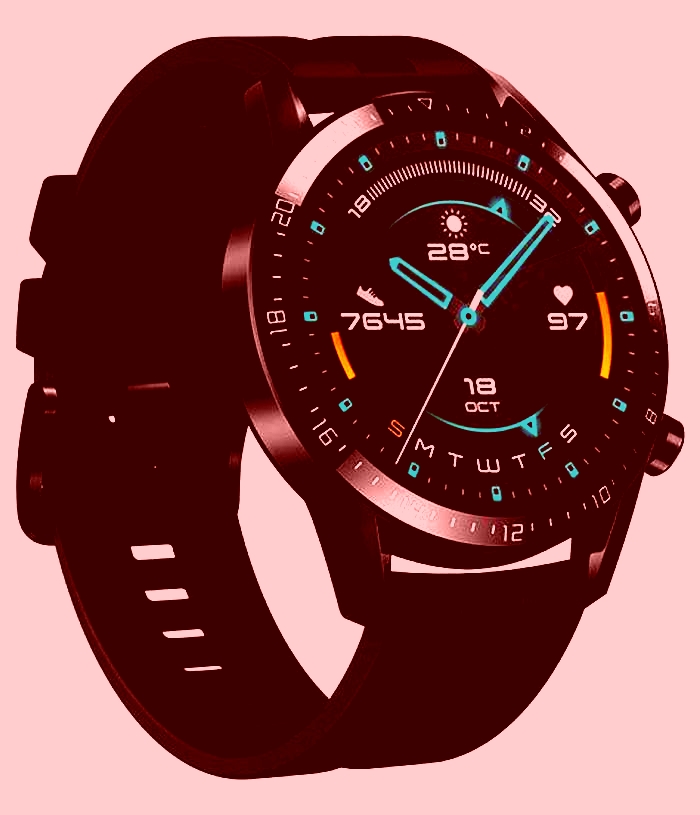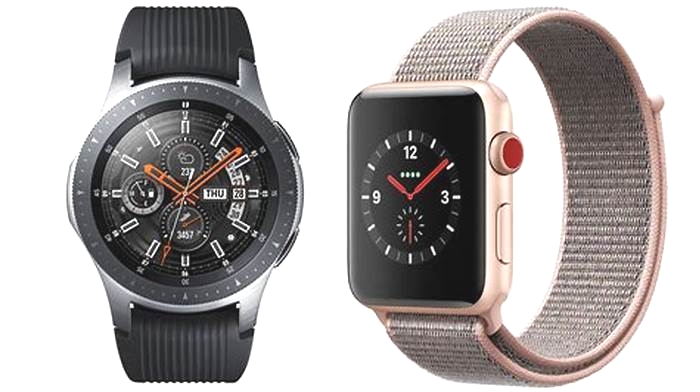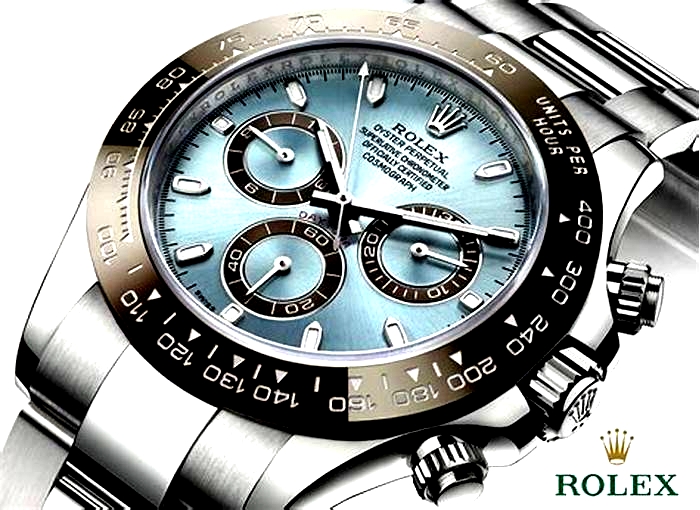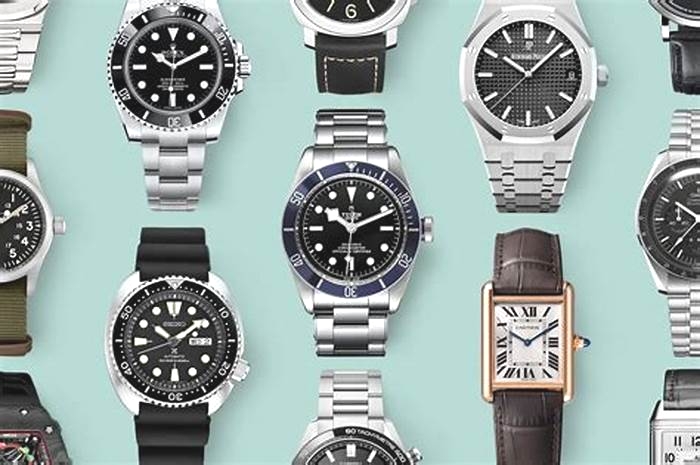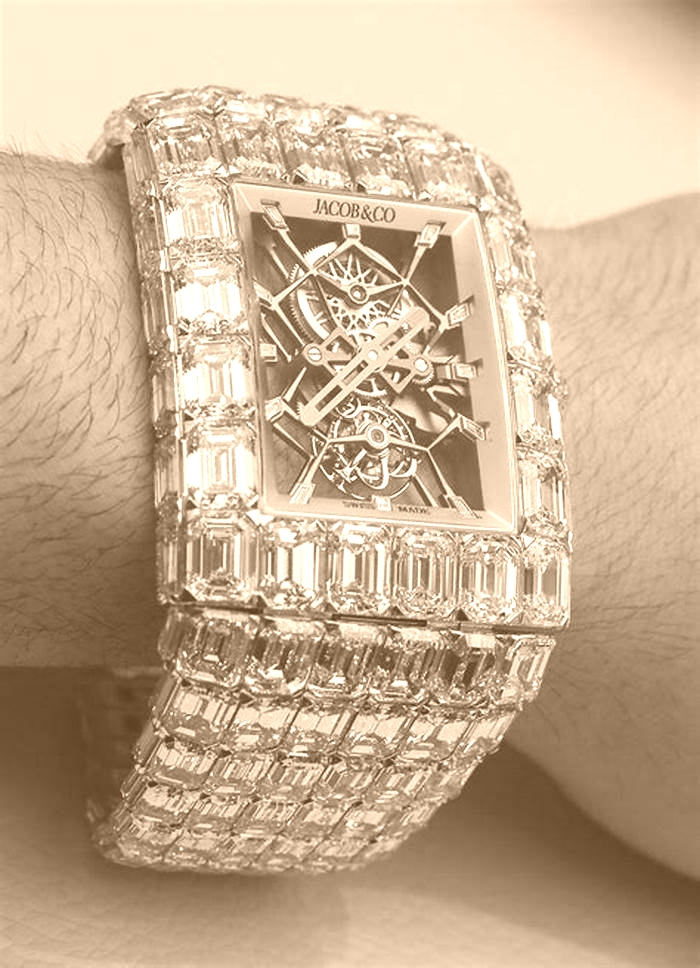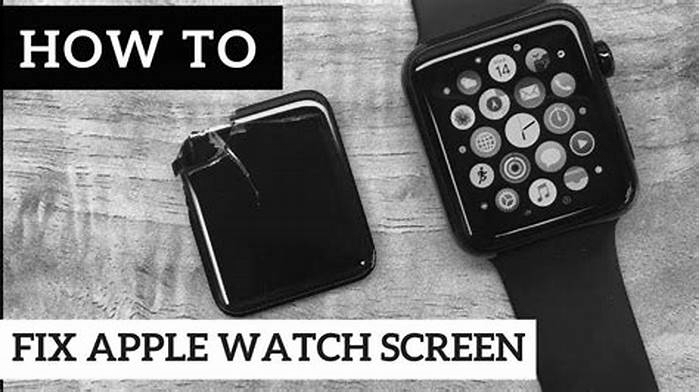Which watch last a lifetime width
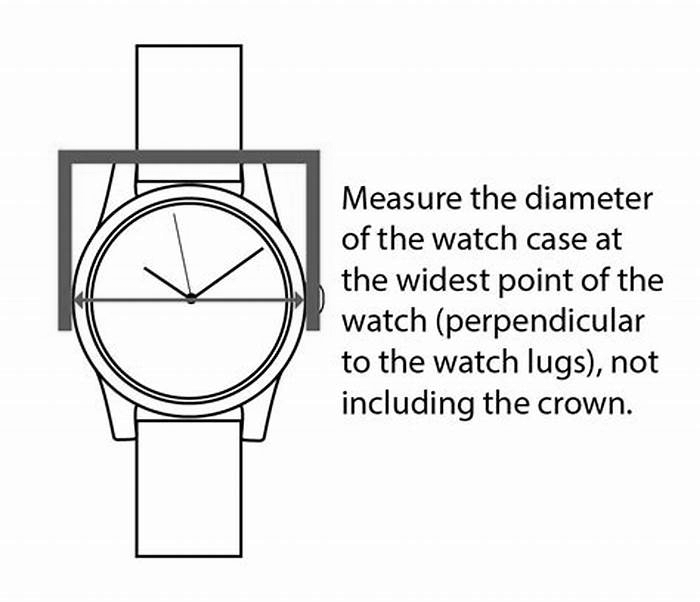
Which Watches Will Last A Lifetime?
For many, watches arent just devices that tell time. Theyre pieces of art, an extension of ones style, and often, a significant investment. As such, when opting for a watch, longevity becomes paramount. Nobody wishes to spend a fortune on a timepiece that wont withstand the test of time.
If youre seeking a watch that promises to last a lifetime, the answer lies in the combination of superior materials, reliable mechanisms, and brands renowned for their craftsmanship. A watch that ticks these boxes not only tells time accurately but remains stylish and functional through the decades.
Its essential to note that the longevity of a watch isnt solely based on its price tag. From the type of movement powering the watch to the materials used in its construction, several factors determine the lasting power of a timepiece.
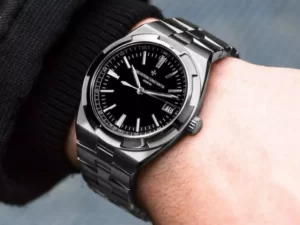
Timeless Materials
When discussing the longevity of a watch, the materials used in its construction play a pivotal role. Two standout materials in the world of premium watchmaking are steel and titanium, often chosen for their durability and aesthetic appeal.
Steel and Titanium
Advantages of Steel
Steel, specifically stainless steel, is a common choice for watch construction. Its popularity stems from several reasons:
- Durability: Stainless steel is highly resistant to corrosion and rust, ensuring that the watch remains free from unsightly blemishes.
- Aesthetics: Its lustrous appearance gives the watch a timeless and elegant look, suitable for both casual and formal settings.
- Affordability: Relative to other premium materials, stainless steel offers a balance between quality and cost.
- Weight: Steel gives a watch a reassuring weight, offering a feel of sturdiness and quality.
Why Titanium Stands Out
Titanium, although less common than steel, has become increasingly popular, especially in high-end watchmaking. The reasons for this surge in popularity include:
- Lightweight: Titanium is remarkably light, making it perfect for those who want a substantial watch without the heft of steel.
- Strength: Despite its weight, titanium is robust and durable.
- Hypoallergenic: Titanium is an ideal choice for those with metal sensitivities as it doesnt cause skin reactions.
- Corrosion Resistance: Much like steel, titanium watches can resist the onslaught of daily wear, ensuring they look new for longer.
Sapphire Crystal
The crystal, or the clear cover over the watch face, plays a crucial role in a watchs durability. Sapphire crystal stands out as the premium choice for many luxury watch brands.
Features and Durability
Sapphire crystal is renowned for its:
- Scratch Resistance: Almost as hard as a diamond, sapphire crystal is nearly impervious to scratches from daily wear.
- Clarity: Over time, sapphire maintains its clear appearance, offering an unobstructed view of the watch face.
- Value: Watches with sapphire crystals often retain their value better, given their long-lasting clarity and resilience.
Difference Between Mineral and Sapphire Crystal
When choosing a watch, its vital to understand the distinction between mineral and sapphire crystals:
- Hardness: Sapphire crystal ranks nine on the Mohs scale of hardness, just below diamond, making it exceptionally scratch-resistant. Mineral crystal, while durable, doesnt match up to sapphire in this aspect.
- Price Point: Mineral crystals are more affordable, and often found in mid-range watches, while sapphire is a staple in luxury timepieces.
- Breakability: Though sapphire is scratch-resistant, it can shatter upon severe impact. Mineral crystals, being a bit more pliable, are less prone to shattering but can scratch more easily.
Mechanical vs. Quartz Movements
The movement, or the engine of a watch, significantly influences its longevity. The debate between mechanical and quartz movements is age-old, each bringing its set of advantages to the table.
Mechanical Watches
Mechanical watches, with their intricate gear mechanisms, represent the pinnacle of horological craftsmanship.
Composition and Longevity
The heart of a mechanical watch is its movement, consisting of:
- Mainspring: This stores energy. When wound, the mainspring releases energy to power the watch.
- Gears: They transfer energy from the mainspring to the hands and other features of the watch.
- Balance Wheel: This regulates the release of energy, ensuring accurate timekeeping.
Given the absence of batteries and with proper care, mechanical watches can function seamlessly for generations.
Proper Care and Maintenance
To ensure the longevity of a mechanical watch:
- Regular Servicing: Like any intricate machinery, a mechanical watch requires servicing every 4-5 years.
- Protection: Avoiding severe shocks or impacts can prolong the life of the movement.
Quartz Watches
Quartz watches are popular due to their precision and ease of use.
Durability of Quartz Mechanisms
A quartz movements core component is its crystal oscillator, vibrating at a fixed frequency when electrically charged. This provides:
- Accuracy: Quartz watches are incredibly accurate, often losing only a few seconds a month.
- Durability: With fewer moving parts than mechanical watches, quartz watches are less susceptible to wear and tear from daily use.
Battery Life and Replacements
A typical concern with quartz watches is battery life. However:
- Lifespan: Most quartz watch batteries can last between 2-5 years.
- Replacement: Changing a battery is a straightforward process, ensuring the watch remains functional for years.
Brands Known for Longevity
In the realm of horology, certain brands stand tall, consistently offering timepieces that not only tell time but do so for a lifetime.
Rolex
An epitome of luxury and durability, Rolex has cemented its position as a front-runner in the watch industry.
Features that Ensure Longevity
Rolex watches are renowned for their:
- Precision: Rolex movements are certified Swiss chronometers, ensuring impeccable timekeeping.
- Oyster Case: Introduced in 1926, it offers optimal protection against water and dust.
- Materials: The use of 904L stainless steel and Cerachrom ceramic bezels boosts their durability.
Iconic Models
While Rolex boasts a rich collection, some models stand the test of time:
- Submariner: A diving watch known for its resilience.
- Daytona: A racing watch with a legacy of precision.
- Oyster Perpetual: The embodiment of Rolexs pioneering spirit.
Patek Philippe
Patek Philippe is synonymous with tradition, innovation, and watchmaking prowess.
Reputation and Craftsmanship
This brand has cultivated a reputation for:
- High Standards: Patek Philippe movements undergo rigorous testing and are bestowed with the Patek Philippe Seal.
- Attention to Detail: Each watch is a product of countless hours of craftsmanship.
- Legacy: Many Patek watches become heirlooms, passed down generations.
Models to Consider
Among their vast collection:
- Calatrava: A dress watch that captures the essence of Patek Philippe.
- Nautilus: With a maritime spirit, this watch combines sportiness and elegance.
Omega
Omegas legacy is intertwined with key historical events, from moon landings to the Olympics.
Reliability Over the Years
Key factors contributing to Omegas longevity:
- Co-Axial Movement: A revolutionary escapement mechanism that reduces friction, increasing service intervals.
- Anti-magnetic Materials: Many Omega watches can resist strong magnetic fields, ensuring consistent performance.
Standout Models
Models that have stood the test of time:
- Speedmaster: Famously worn on the moon.
- Seamaster: A divers favorite for its robustness.
Seiko
Marrying affordability with durability, Seiko has won hearts globally.
Affordable and Lasting
Seikos prowess lies in:
- In-House Production: From movements to dials, Seikos in-house approach ensures quality.
- Innovations: The introduction of the quartz movement transformed the watch industry.
Top Seiko Models for Longevity
- Grand Seiko: Exemplifies the pinnacle of Seikos craftsmanship.
- Seiko 5: A range offering durability at an attractive price point.
Features to Consider
Certain features in watches play a pivotal role in determining their longevity.
Water Resistance
Importance for Durability
Water can wreak havoc on a watchs internals. Hence, water resistance is vital for:
- Protection: Shields the movement from moisture.
- Versatility: Allows wear in diverse environments, from showers to swimming.
Rating Systems and What to Look For
Water resistance is often measured in atmospheres (ATM) or meters:
- 3 ATM: Suitable for everyday use, resistant against splashes.
- 5 ATM: Can endure light swimming.
- 10 ATM and above: Suitable for diving and intense water activities.
Shock Resistance
Modern Innovations
Innovations in shock resistance include:
- Balance Springs: Made from silicon or other anti-shock materials.
- Rigid Casing: Protects the movement from external impacts.
Why it Matters for a Lifetime Watch
Shock resistance ensures:
- Consistent Timekeeping: Prevents misalignment of parts due to drops.
- Longevity: Reduces wear and tear from regular usage.
Maintenance and Servicing
Like any precision instrument, watches demand care.
Frequency of Check-ups
- Quartz Watches: Every 3-4 years.
- Mechanical Watches: Every 4-5 years.
Importance of Regular Servicing
Servicing ensures:
- Optimal Performance: Cleaning and oiling maintain accuracy.
- Extended Lifespan: Replacing worn-out parts prolongs the watchs life.
Price vs. Longevity
High price tags often come with an expectation of durability. But is it always the case?
Does Expensive Always Mean Durable?
Not necessarily. While luxury watches often boast superior materials and craftsmanship, many affordable brands offer robust watches. Research and due diligence are crucial.
Finding Balance between Affordability and Lasting Value
Seeking out brands that offer warranty, prioritize quality control, and have a reputation for durability can lead to finding a timepiece that offers value without breaking the bank.
FAQs
Why are mechanical watches considered durable?
Mechanical watches, driven by intricate gear mechanisms, are revered for their craftsmanship and durability. With proper care, these watches can serve for generations, often becoming family heirlooms.
What role does material play in a watchs longevity?
The material of a watch plays a pivotal role in its durability. Premium materials like steel, titanium, and sapphire crystal are not only resistant to wear and tear but also add a timeless charm to the watch.
How often should a watch be serviced to ensure its longevity?
Regular servicing, typically every 4-5 years, ensures the watch operates efficiently. Its akin to a health check-up, ensuring that all components are functioning correctly and identifying potential issues before they escalate.
Conclusion
In the intricate world of horology, a watchs longevity is an amalgamation of its craftsmanship, materials, and the love it receives from its owner. Timepieces, more than just functional objects, narrate stories of generations, marking milestones and weaving memories.
While it might be tempting to believe that the more expensive the watch, the longer it will last, the reality offers a more nuanced perspective. Even affordable watches, when chosen wisely, can rival the durability of their pricier counterparts.
Choosing a watch destined to last a lifetime requires research, understanding, and often a bit of intuition. However, the rewarda faithful timekeeping companion, ready to journey through lifes ups and downsis undoubtedly worth the effort.
Collection: 18mm Watch Straps
Collection: 18mm Watch Straps
Looking for 18mm Watch Strap Replacements?
Discover the perfect fit for your timepiece with StrapHabit's 18mm Watch Straps collection. Crafted with precision and style, these straps offer a tailored look for watches with an 18mm lug width. From classic leather to modern nylon, our diverse range ensures you find the ideal match for any occasion. The quick-release feature allows easy customization, while the quality materials guarantee durability and comfort.
Whether you're aiming for a timeless aesthetic or a contemporary twist, redefine your 18mm wristwear with StrapHabit's Watch Straps. Upgrade your watch effortlessly and make a statement with the perfect fit and style.
The Ultimate Guide To Buying A Watch That Will Last A Lifetime

A watch is more than just a piece of jewelry you wear to help you tell time. It is a part of your wardrobean elegant piece that completes your look as you head on to meet the demands of your life.
That is why wearing a watch is a conscious decision. You wear it because you need it and value time, whether yours or others.
So, having a watch that will last you for a lifetime is something you should seek. It should be a timepiece that would serve as a good investment, something you would wear to any occasion or pass on to the next generation as an heirloom.
Suppose youre on the hunt for the right watch for youone that will stick with you to the end. Thus, heres an ultimate guide to help with your buying decision:
1. Quartz Or Mechanical
An easy way to tell if the movement of your watch is mechanical or quartz is by looking at the second hand. If it moves with a tick-tick motion, its a quartz watch. Meanwhile, mechanical watches have a smooth, sweeping movement.
This movement is also known as caliber. It is the powerful tiny engine that operates the watch and its different functions inside. Hence, the watch can show you an accurate time.
Longines watches and similar others offer quartz and automatic watches in their collections.
A quartz movement type of watch is battery operated and is low maintenance. It only needs a quick battery change once in a while, and its good to use again. However, many watch enthusiasts feel that the no-frills quality of this watch leaves so much to desire.
Meanwhile, a mechanical movement is preferred the most by luxury watch collectors because of its high quality and craftsmanship.
Unlike quartz, which uses a battery, the mechanical type uses energy from a wound spring to power a watch. It has an intricate series of gears and springs that store energy that is regulated to be released to power the watch.
Under the mechanical type, theres also manual or automatic to be considered.
Manual movement is the oldest type that requires the hand-wounding of the watch. Here, the wearer must wind the crown multiple times to store energy for it to work. Some do the winding every 24 hours, whereas others do it after five days or more. It depends on the capacity of the watch to store energy; some have an eight-day power reserve, while some wearers have a habit of winding their timepieces as soon as they wear them.
Another mechanical movement type is automatic (also called self-winding). This is popular because you wont have to worry about winding your watch and finding yourself late for an appointment. The watch gets its energy from the natural motion of the wearers arm. It will maintain its power as long as the owner wears the watch continually.
2.Watch Type
Having a specific watch to use for any event in your life is what every busy achiever must have in mind. That ensures you dress the part each time and are ready for whats to come.
Here are some of the types of watches you can consider:
- A divers watch is designed for underwater diving and has a water resistance of around 200300 meters. Great examples of this type of watch include the Omega Seamaster andthe Rolex Submariner.
- An aviation watch (also called a pilots watch) typically has a black dial and large, easy-to-read markers.
- Meanwhile, a driving watch is for drivers to help them see the time without the need to twist their wrist or look away from the road. It is an essential tool for anyone whos always behind the wheel. Some watches also have chronograph movements to track the lap time of race car drivers.
- A dress watch hasno complications and serves only one purpose: to tell time. You can use this at formal events or even on a casual Saturday night bowling with friends. It is the most elegant of all timepieces and is a classic that will surely last for generations to come.
3. Watch Strap

Each type of watch corresponds to a specific strap. If you have decided on a dress watch, your next decision would be on straps. You may opt for leather, rubber, metal, silicone, nylon, and canvas.
Changing the strap can level up the look of a watch and your entire wardrobe. Today, many watch enthusiasts take off the original straps of their watches to save them from damage and replace them with custom straps you can now buy from specialty shops.
Conclusion
A watch can become a statement piece that could give you a second look from others. It may also be a piece of a conversation starter on days you would like to impress people.
Wearing a watch is also associated with being conscientious. The perception that you create among your peers is just as crucial as carrying yourself in an event or occasion. Hence, having a classic timepiece will ensure that you have something to complete your look anywhere you plan to go.
Iskra Banovi is our seasoned Editor-in-Chief at Blufashion. She has been steering the websites content and editorial direction since 2018. With a rich background in fashion design, Iskras expertise spans across fashion, interior design, beauty, lifestyle, travel, and culture.

